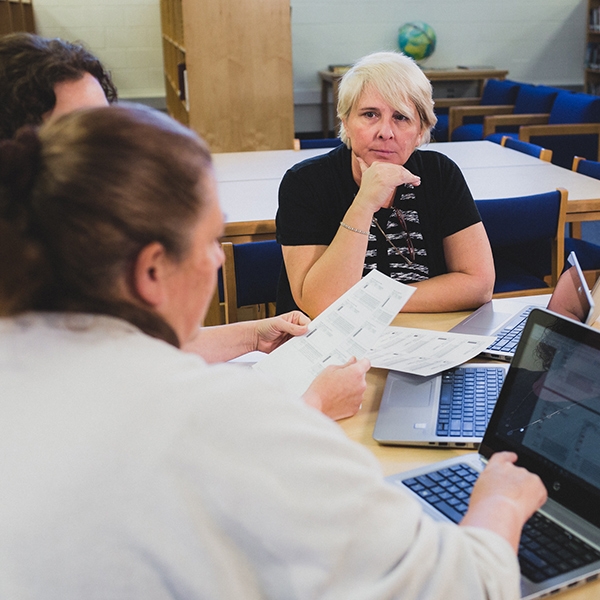
Schools across the country are transforming education by embracing innovation and breaking out of the traditional paradigms of time, place, and pace. Teachers are blending in-person instruction with technology to differentiate lessons, using real-time data to personalize learning and allow for mastery-based progression, and they are incorporating student choice and agency into instructional decisions. It is not easy, nor simple work, but these innovative practices are the pathway to meeting the needs of all learners.
School leaders need to be aware, however, that successful implementation of new technology and other innovations demand thoughtful and strategic communications planning. The following recommendations can help education leaders successfully implement innovation in their schools.
Create a Culture of Communication
School districts that develop thoughtful communication plans do more than just push important information out to their stakeholders. These districts build a culture of engagement, transparency, and trust that is critical for innovation both to take hold in the classroom and to be sustainable and scalable across many schools. Poor communication can lead to unmanageable expectations, confusion, and opposition to change.
A strategic communication plan should always focus on the districts’ overarching vision and mission. If you are like most districts, you have many different priorities to juggle, but they should always connect back to your district’s goals for student success. Otherwise, there is a real risk that introducing technology-driven learning will be seen as “just another initiative,” and therefore will be either received with confusion, apathy, or derision.
Fairbanks North Star Borough School District in central Alaska began its personalized learning planning in 2017, working with a team from Education Elements, and started laying the foundation for a culture of communication by creating a detailed communication plan, a new website page, FAQ page, and hosting community information sessions, among other tactics. “We recognized early on the need to help staff, families, and community members understand how a system-wide shift to a personalized learning model would support our students’ success,” said Superintendent Dr. Karen Gaborik. “Our communication and engagement efforts required a cross-department collaborative team to plan strategic communication and provide timely response to the developing community dialogue.”
Know Your Audiences
At the heart of effective communication is knowing your audiences. Taking the time to identify and understand your key stakeholders, what they care about, and how best to reach them, is critical to successful communication. When introducing new initiatives to support student learning, consider your internal audiences (e.g., teachers, students, principals, and administrative staff including IT directors) as well as external stakeholder groups (e.g., parents, community/local businesses, funders/foundations). Deploy regular surveys or other tools to better understand the groups’ top issues, concerns, and values. What special communication needs might they have?
Although Superintendents and other leaders are the “go to” officials for the school system, linking the right messenger with the right audience in the right format can be powerful. Teachers can be highly effective communicators and are trusted by parents and community members. Students themselves can be excellent messengers to their peers and other groups. For example, leaders at CICS West Belden school in Chicago realized that getting busy parents to evening meetings about the school’s blended learning program would be difficult, so they flipped the traditional parent/teacher conferences (which nearly all parents attended) using teachers to better engage families in the school’s blended and personalized learning program.
Evolution vs. Revolution
A final recommendation stemming from the experiences of districts doing this work across the country is to avoid overwhelming key stakeholders with visions of dramatic change. Education leaders often describe new technology or programs as a “revolution” in education – one that will change everything from classroom practice to schedules, roles, and responsibilities. Instead, it is much more helpful to describe an “evolution” – building off of the great practice that teachers are already doing, using new tools and technology to amplify the excellent work happening in our schools. This framing allows education leaders to celebrate the hard work that is happening, and increases the willingness of practitioners and others to engage in innovation to help achieve student learning goals.
Resources:
Communications Planning for Innovation in Education: How to communicate about your blended & personalized learning initiatives (The Learning Accelerator, Education Elements)

